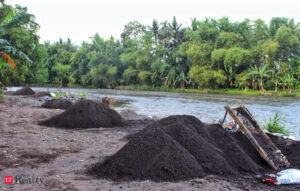‘The Sabarmati Report’ box office collection day 13: Vikrant Massey’s starrer loses its pace; mints only Rs 85 lakhs on its second Wednesday |
The Vikrant Massey starrer ‘The Sabarmati Report’ was released on November 15, 2024. The movie initially had a steady hold at the box office, owing to the gripping narrative and stellar performances. Also, since the respective movie is tax-free in many states, it attracts the audience to the theatres. On its day 12, i.e. its second Tuesday, the movie finally crossed the Rs20 crore mark. However, the following day the movie failed to maintain its pace and according to the early estimates of Sacnilk, it only collected Rs 85 lakhs on the second Friday, making the collection till day 13 – Rs.21.25 crores.
Directed by Dheeraj Sarna, the political drama had the lowest figure on November 27, since its release. It had an overall 11.13% Hindi occupancy on its second Wednesday. On Day 12, it made a business of Rs.90 lakh and before that, the film earned an estimated Rs 1.4 crore on its first Friday, Rs 2.6 crore on Saturday, and Rs 3.1 crore on Sunday. There was a steady pace, until November 27. However, considering the tough competition, the movie is trying its best to survive.
‘The Sabarmati Report’
Based on the 2002 Godhra train burning in Gujarat, ‘The Sabarmati Report’ chronicles the incident that triggered communal riots in the state. Back then, Prime Minister Narendra Modi was the Chief Minister of Gujarat.
Times Of India gave the movie 3 stars out of 5. Our review of the movie states – “With a crisp two-hour runtime, the film manages to keep viewers engaged for the most part. The film seeks to challenge traditional narratives, suggesting that history has often been shaped by biased perspectives and calling for a re-evaluation. Unfortunately, a more grounded and realistic portrayal could have made it far more compelling. The first half largely sidelines the Godhra incident, focusing instead on the workings of a broadcast channel that manipulates its coverage to favour the then-ruling party, exploiting its close ties for political gain.”







